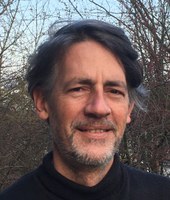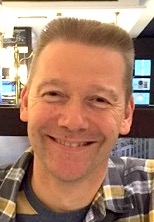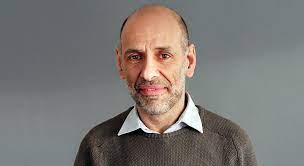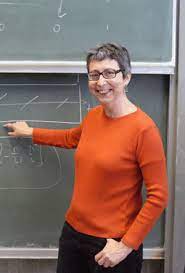Hello.
Thanks for stopping by. Enjoy my site.








Upcoming Talks
30/06/2022 10:15 Times in Europe/Rome (UTC +1)
Kenji Yajima (Gakushuin University in Tokyo)
The L-boundedness of wave operators for four dimensional Schroedinger operators with threshold resonances.
We prove that the low energy part of the wave operators for Schroedinger operators H= -△+ V(x) are bounded in Lp for 1<p≤ 2 and unbounded for 2<p≤∞ if H has resonances at the threshold and that, if H has eigenfunctions only at the threshold, they are bounded in Lp for 1<p<4 but unbounded for 4<p≤∞ unless all threshold eigenfunctions f satisfy the condition $\int_{\mathbb{R}^4}x_j V(x) f(x)dx=0$, 1<p≤ 4. It is long known that the high energy parts are bounded in Lp for all 1<p≤ ∞ and that the same holds for the wave operator themselves if H has no eigenfunctions nor resonances at the threshold .
Past Talks
12/05/2022 14:15 Times in Europe/Rome (UTC +1)
Maria Esteban (CNRS & Université Paris-Dauphine)
Spectral results and open problems for Dirac-Coulomb operators with general charge distributions
Abstract: In this talk I will present old and new results concerning the self-adjointness, domains of definition and variational characterisation for Dirac-Coulomb like operators with very geenral charge distributions. Open problems and new directions will be also presented at the end of the talk.
21/04/2022 14:15 Times in Europe/Rome (UTC +1)
Jan Philip Solovej (University of Copenhagen)
The Ground State Energy of Dilute Bose Gases
Abstract: In the talk I will discuss the many-particle quantum problem of translation invariant gases of Bose particles. In dimensions 1,2 and 3 I will describe asymptotic formulas for the ground state energy in the dilute limit. I will focus on new results in dimension 1 derived jointly with Agerskov and Reuvers. I will also review what is known in dimensions 2 and 3. In dimension 3 the asymptotic formula is the famous Lee-Huang-Yang formula that was rigorously established in joint work with Fournais in 2020. I may also briefly mention results on Fermi gases.
21/04/2022 09:15 Times in Europe/Rome (UTC +1)
Chiara Boccato (Università degli Studi di Milano)
Static properties of the Bose gas
31/03/2022 14:15 Times in Europe/Rome (UTC +1)
Alain Joye (Institute Fourier, CNRS)
Adiabatic Lindbladian Evolution with Small Dissipators
Abstract: We consider a time-dependen small quanum syste weakly oupled to an environment, whose effective dynamics we address by means of a Lindblad equation. We assume the Hamiltonian part of the Lindbladian is slowly varying in time and the dissipator part has small amplitude. We study the properties of the evolved state of the small system as the adiabatic parameter and coupling constant both go to zero, in various asymptotic regimes.
31/03/2022 09:15 Times in Europe/Rome (UTC +1)
Giovanna Marcelli (SISSA Trieste)
Gentle introduction to adiabatic perturbation theory
24/02/2022 14:15 Times in Europe/Rome (UTC +1)
Zied Ammari (IRMAR, Université de Rennes 1)
On Well-posedness for the Gross-Pitaevskii and Hartree Hierarchy Equations
Abstract: Gross-Pitaevskii and Hartree hierarchies are infinite systems of coupled PDEs related to mean field theory of Bose gases. Due to their physical and mathematical relevance, the issues of well-posedness and uniqueness for these hierarchies have recently been studied thoroughly using specific nonlinear and combinatorial techniques. In this talk I will introduce a new approach based on a duality between hierarchies and Liouville equations. Several new results are obtained as an outcome of this approach.
20/01/2022 09:15 Times in Europe/Rome (UTC +1)
Marco Olivieri (Aarhus University)
Wigner measure approach for the mean field limit in Many Body Quantum Mechanics
20/01/2022 14:15 Times in Europe/Rome (UTC +1)
Nicolas Rougerie (ENS)
Two modes approximation for bosons in a double well potential.
Abstract: We study the mean-field limit for the ground state of a gas of bosonic particles in a double-well potential, jointly with the limit of large inter-well separation/large potential energy barrier. Two one-body wave-functions are then macroscopically occupied, one for each well. The physics in this two-modes subspace is usually described by a Bose-Hubbard Hamiltonian, yielding in particular the transition from an uncorrelated "superfluid" state (each particle lives in both potential wells) to a correlated "insulating" state (half of the particles live in each potential well).
Through precise energy expansions we prove that the variance of the number of particles within each well is suppressed (violation of the central limit theorem), a signature of a correlated ground state.
Quantum fluctuations around the two-modes description are particularly relevant, for they give energy contributions of the same order as the energy difference due to suppressed variances in the two-modes subspace. We describe them in terms of two independent Bogoliubov Hamiltonians, one for each potential well.
Joint work with Alessandro Olgiati and Dominique Spehner.
20/01/2022 09:15 Times in Europe/Rome (UTC +1)
Alessandro Olgiati
Introduction to bosonic mean-field: Hartree and Bogoliubov approximation
16/12/2021 14:15 Times in Europe/Rome (UTC +1)
A general bulk-edge correspondence at positive temperature.
Abstract: The "standard" bulk-edge correspondence for 2d insulators at zero temperature is an equality between the bulk Hall conductivity and the edge conductance, where the former is equal to a topological index and thus quantized. In a recent work with Horia Cornean and Massimo Moscolari, we show that for homogeneous magnetic Schrödinger operators this equality is just a special case of a more general equality between bulk and edge quantities. In particular, we show that the magnetization density in the bulk is equal to the edge current at any temperature and independent of any spectral or mobility gap. Moreover, since it equals a bulk quantity, this shows that the total edge current is completely insensitive to perturbations at the edge. By defining the Hall conductivity at positive temperature through Streda's formula, we also obtain an equality between the Hall conductivity in the bulk and the edge conductance for all temperatures and without assuming a gap.
16/12/2021 09:15 Times in Europe/Rome (UTC +1)
Domenico Monaco
Quantum Hall effect: topology in the lab

